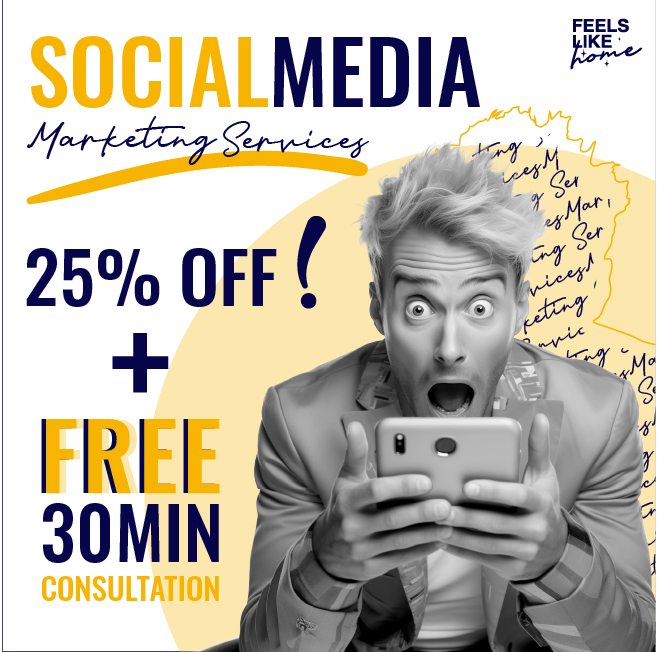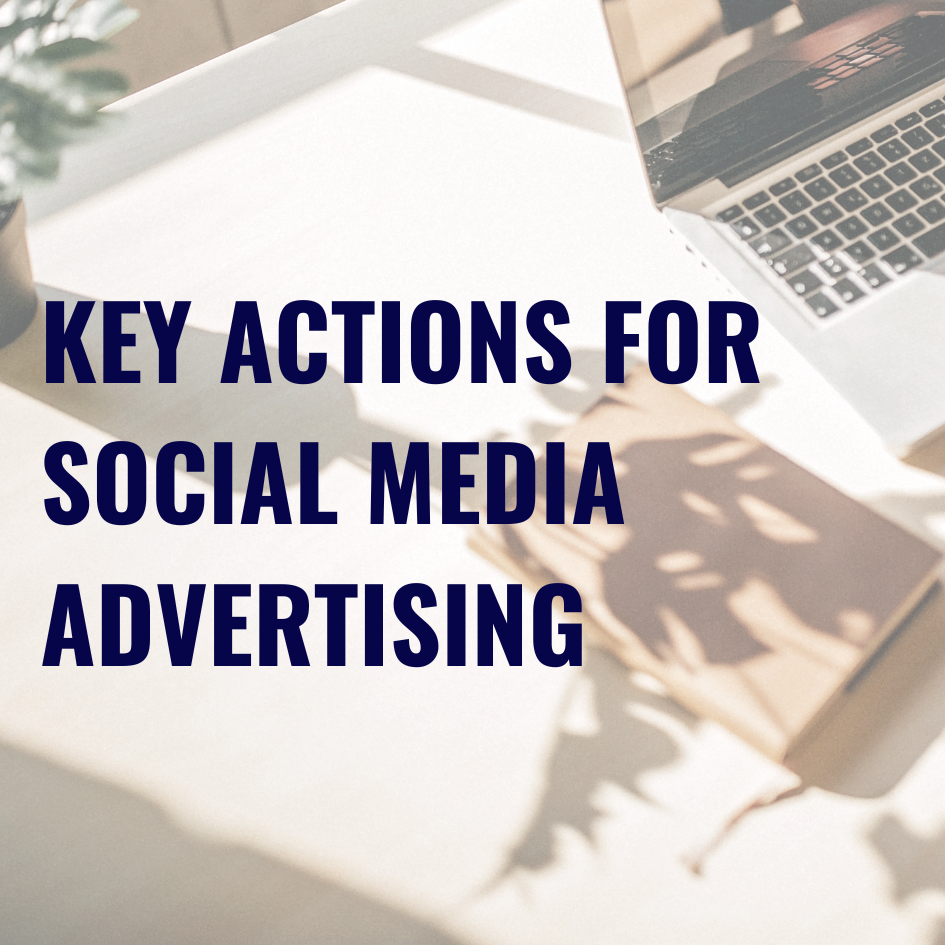Google Ads into your marketing strategy

The Magic of Google Ads during the Holidays Or Any Special Dates In this blog post, we’ll delve into why integrating Google Ads into your marketing strategy is crucial, especially during the holiday season. And the best part? We’re offering an exclusive 25% discount on our services, coupled with a free consultation to uncover untapped opportunities for making your company more profitable this Christmas. Targeting the Right Audience at the Right Time: The true enchantment of Google Ads lies in its precision targeting capabilities. During the holidays, consumers actively search for gifts, decorations, and festive necessities. Google Ads lets businesses position their ads in front of these motivated shoppers, ensuring that your products or services are visible when it matters the most. Seasonal Keywords and Trends: Google Ads provides insights into trending keywords and search queries during the holiday season. By incorporating these seasonal keywords into your ad campaigns, you can align your offerings with what consumers are actively searching for, increasing the likelihood of attracting qualified leads. The holiday season is not just about transactions; it’s about emotions and connections. Google Ads allows businesses to capture the festive spirit by creating ads that evoke the warmth and joy of the season. Utilize eye-catching visuals, hire a graphic designer or do it by your own if you have the ability, incorporate holiday-themed elements, and craft ad copy that resonates with the emotions associated with the holidays. Whether it’s a family gathered around a beautifully decorated tree or the excitement of gift-giving, your ads should reflect the essence of the season. Targeting the Right Audience at the Right Time: Timing is everything during the holidays. Google Ads’ targeting capabilities shine brightest when reaching the right audience at the right moment. Leverage Google’s data on consumer behavior to understand when your target audience is most active. Schedule your ads to appear during peak shopping hours, ensuring that your products or services are front and center when potential customers are actively searching for holiday-related items. Seasonal Keywords and Trends: The magic wand of Google Ads extends to its insights into seasonal keywords and trends. Dive into Google Trends to identify what’s hot during the holidays. Incorporate these keywords into your ad copy and adjust your bidding strategy accordingly. Staying in tune with the latest trends ensures that your ads align with what consumers are actively searching for, boosting the relevance and effectiveness of your campaigns. Mobile Magic for On-the-Go Shoppers Mobile devices have become integral to the holiday shopping experience. Google Ads’ mobile-friendly formats provide the magic touch needed to connect with on-the-go shoppers. Optimize your ads for mobile devices, ensuring seamless navigation and a visually appealing experience. Consider the use of location-based targeting to capture local shoppers looking for last-minute gifts or holiday essentials on their mobile devices. Real-Time Adjustments for Maximum Impact One of the enchanting features of Google Ads is its real-time adaptability. Monitor the performance of your campaigns closely and be ready to make on-the-fly adjustments. If a particular ad is gaining traction, allocate more budget to it. If a keyword is underperforming, tweak your strategy. The ability to make real-time adjustments ensures that your campaigns remain agile and responsive to the dynamic nature of holiday consumer behavior. Showcasing Special Offers and Promotions The holiday season is synonymous with special offers, and Google Ads is your stage to showcase these promotions. Craft compelling ad extensions that highlight your exclusive deals, discounts, and promotions. Whether it’s a limited-time offer, a holiday bundle, or free shipping for festive purchases, use Google Ads to broadcast these enticing offers to your audience, driving them to choose your brand over competitors. This holiday season, don’t just dream of increased profits – make it a reality with the unmatched power of Google Ads. Our exclusive 25% discount, paired with a free consultation, is your ticket to a more profitable Christmas.
ADVICES FOR SOCIAL MEDIA ADVERTISING

Hello there, aspiring social media advertisers! If you’re just dipping your toes into the vibrant world of online promotion, fear not. We’ve got your back with a beginner-friendly guide to mastering social media advertising. Let’s make your journey smooth, effective, and, most importantly, enjoyable! 1. Define Your Objectives: Know Your North Star 🌟 Before diving into social media advertising, clearly outline your goals. Whether it’s increasing brand awareness, driving website traffic, or boosting sales, having well-defined objectives will guide your strategy and metrics for success. Recommended Tool: Google Analytics 2. Know Your Audience: Become a Social Sherlock 🔍 Understanding your target audience is crucial for effective social media advertising. Conduct thorough research to identify demographics, interests, and online behaviors. Tailor your ad content to resonate with the preferences of your audience for maximum impact. Dive into websites like Facebook Audience Insights to uncover the demographics and interests of your potential fans, also you can be updated about what people is searching on the web on the platforms we are recommending you in this post. Recommended Tools: Answer The Public, Facebook Audience Insights, Also Asked 3. Craft Compelling Visuals and Copy: Make Your Content Pop! 🎨 Catch your audience’s attention with eye-catching visuals and compelling copy. Invest time or hire an agency to create high-quality images or videos that tell a story and evoke emotions. Write concise and engaging copy that communicates your message effectively. Recommended Tools: Canva, Grammarly, PicsArt , CapCut 4. Leverage Ad Targeting: Hit the Bullseye 🎯 5 Take advantage of the robust targeting options provided by social media platforms. Refine your audience based on demographics, interests, behaviors, and even retargeting. This ensures your ads reach the right people at the right time, maximizing the likelihood of conversion. Recommended Tools: Facebook Ad Manager, Google Ads 5. Hire professionals!🌟 Hiring marketing professionals is crucial for your company’s success. Their expertise, tailored strategies, and ability to stay ahead of trends ensure your brand stands out. This not only saves time but also proves to be a cost-effective solution. With measurable results, marketing professionals empower you to make informed decisions, driving the sustained growth of your business. Feeling a bit lost with your brand or company? Grab a free consultation on our HOME page and let’s work on your strategy together. 🌟 CLICK HERE AND CONTACT US🌟
Branding: Easy Guide for beginners

Branding: Easy Guide for beginners Branding is like a signature for your business, much more than a logo or catchy phrase. It’s how you introduce yourself, the emotions you spark, and the story you share. In this blog, we’ll explore branding, breaking it down into simple terms for beginners. What’s Branding, Really? A Business’s Heart and Soul: Branding is about defining your business’s unique identity. It covers your beliefs, personality, mission, and the promises you make to your customers. While logos and colors matter, branding goes beyond the looks. Building a Strong Foundation: Here we will give you a list of questions that will help you to define your Brand Identity from Cero. What’s Your Mission and Values? What is the purpose or mission of your business? What values are important to you and your brand? 2. Who’s Your Target Audience? Who are your ideal customers, and what are their demographics, needs, and desires? Age,country, mothers,kids,students,workers? 3. What Sets You Apart? What makes your business unique? What’s your unique selling proposition (USP)? 4. What’s Your Brand’s Personality? If your brand were a person, how would you describe its personality and tone? 5. What Visual Elements Reflect Your Brand? What colors, fonts, and design elements align with your brand’s identity? 6. What Story Does Your Brand Tell? What’s the story of your brand? How did it start, and what journey is it on? 7. How Do You Want Customers to Feel? What emotions or feelings do you want your brand to evoke in your customers? 8. What Are Your Brand’s Core Messages? What are the key messages or values you want your brand to convey? USE KEY WORDS; (trustable,empathic,etc) 9. What’s Your Competitor Landscape? (INSPIRE YOURSELF WITH THE COMPETITION, USE THEM AS A REFERENCE OF WHAT DO YOU WANT TO ACHIEVE! ) Who are your main competitors, and how does your brand differ from them? 10. How Does Your Brand Engage with Customers? How do you plan to interact with and engage your customers through your brand? (SOCIAL MEDIA-EMAIL) 11. What’s Your Brand’s Long-Term Vision? Where do you see your brand in the future? What are your long-term goals? 12. How Will You Measure Brand Success? What metrics or key performance indicators (KPIs) will you use to gauge your branding efforts’ effectiveness? Now you’re ready to choose the outfit of your business! (The Visual Side: How You Look) Designing Your Logo: Your logo is your business’s face; it should be unforgettable and show your personality. Choose your Color pallet; colors Speak: Colors can stir feelings and shape how your brand is seen. Choose your typography, Words Matter: The fonts you use can set the tone for your brand. Weaving a Story: The Narrative STORYTELLING Share Your Brand’s Tale: Tell the story of how your business started and what it’s been through. Talk Through Content: Blogs, social media, and other content can help narrate your brand’s story. DONT GIVE UP! Staying in Tune: Consistency Counts Uniform Branding: To build trust, everything from your website to your packaging should look and feel the same. Customer Experience: Your brand isn’t just looks; it’s also how customers feel when they interact with you. In the end, branding is your business’s compass, pointing you in the right direction. It’s the art of showing who you are and what you’re all about in a way that makes sense to your audience. It takes time and effort, but it’s a long-term investment that’s worth it. Your brand isn’t just a logo; it’s the story that tells the world who you are.
September Social Media Tips and Tricks for Marketing Success

Welcome back, fellow digital marketers! September has arrived, bringing with it new opportunities to shine on social media. As we transition from summer to fall, let’s harness the power of this vibrant season to boost our online presence and engage with our audience. In this month’s edition of our blog, we’ll dive into some invaluable tips and tricks for social media marketing, along with a few bonus strategies to enhance your digital marketing game. Ready? Let’s get started! 1. Painting with Autumn’s Palette in Your Visuals Picture this: hues of crimson, gold, and deep green that mirror the vibrant foliage outside your window. Why not infuse these warm, earthy tones into your social media visuals? Craft custom graphics, templates, or posts that pay homage to the beauty of fall. Personalize them with your brand’s unique flair to create a visual narrative that resonates with your audience. Pantone fall Color Pallete 2023 2. Navigating the Social Media Content Calendar Stay ahead of the curve this September with a well-structured content calendar. Plot out your social media posts, complete with catchy captions and relevant hashtags, in advance. This organizational step ensures a consistent posting schedule, diversifies your content mix, and aligns your messaging with key dates and events in the month. 3. Engage Your Audience with Interactive Content Is the moment to connect with your creativity!.. Ask yourself what do you would like to see or experience on the social media accounts that you usually follow, Interactive content is a hit on social media. Experiment with polls, quizzes, and Q&A sessions on platforms like Instagram and Facebook. These features can spark conversations, boost engagement, and provide valuable insights into your audience’s preferences and interests. 4. Embark on a Trendy Social Media Expedition Stay at the forefront of social media marketing by exploring emerging trends and platform features. Keep a vigilant eye on platform updates and consider how you can leverage them to your advantage. Whether it’s embracing Instagram Reels, surfing the latest TikTok waves, or diving into Twitter’s audio spaces, embracing innovation sets you apart from the competition. 5. The Power of Collaboration and Partnerships In the spirit of September, reach out and forge meaningful collaborations. We anre humans and our nature is to inte Identify influencers or brands that share your values and resonate with your audience. These partnerships can breathe new life into your campaigns, expanding your reach and introducing your brand to fresh, engaged communities. Bonus: SEO Optimization and Analytics Mastery In the digital realm, don’t overlook the basics. Optimize your social media profiles with carefully chosen keywords and phrases to enhance discoverability. Regularly analyze your social media performance using analytics tools to glean actionable insights. This data-driven approach helps refine your strategies, ensuring you’re always on the path to improvement. We hope you like it!! If you need help with all this topics get our FREE CONSULTATION and together we will create the best strategies for the success of your Business or project!! wwww.feelslikehome.media
Why Choose Us?

We are an enthusiastic group of digital marketing specialists, dedicated to pushing your businesses to new heights in the ever-evolving competitive online realm. At our core, we revel in the understanding that each business possesses its own uniqueness. We adopt an individual approach for every project, forging close collaborations with our clients to authentically grasp their goals, challenges, and aspirations. This profound comprehension allows us to craft strategic and tailor-made digital marketing solutions that deliver extraordinary outcomes. In a world with overwhelming information, we take pride in helping our clients rise above the noise and make a resounding impact. We will be able to craft fascinating digital campaigns that fascinate audiences, develop unshakeable brand devotion, and produce measurable outcomes thanks to our data-driven insights and limitless creativity. What sets us apart from our competitors is our unwavering commitment to building strong, long-lasting partnerships. We go beyond the usual role of service providers, positioning ourselves as trusted advisors and strategic allies. We will tirelessly support you and provide invaluable insights to ensure that you as a client can confidently navigate the ever-changing digital landscape. We recognize that in a field where innovation is king, we have no qualms about embracing new trends and consistently expanding the realm of the possible. The newest developments in marketing techniques and technology are always being learned and adapted to by our staff. We’ll constantly make sure that our customers receive the best possible solutions. So, whether you’re a startup looking to make a dazzling entrance, a small business yearning to expand your online reach, or an established enterprise striving to soar to new heights, we’re here to help you unlock your full potential in the digital realm. Let’s embark on an exhilarating journey, together and drive unwavering success in the ever-evolving digital landscape. #digitalmarketing #socialmediamanagement #digitalstrategy
Marketing TIPS for your Business

Marketing TIPS for your business. To have a successful content strategy, setting up content marketing goals is crucial. But creating worthwhile objectives can be difficult. We’ll give you some advice on how to set up efficient content marketing objectives for your business in this post. Start with your company’s goals. Your overall campaign’s objectives should align with your content marketing objectives. Think about the goals you have for your company in terms of revenue, brand recognition, client retention, and other key performance indicators (KPIs). This will assist you in producing content that supports and promotes your company’s objectives. Identify your target market. You should create content specifically for your target audience. Think about who they are, what matters to them, and what your company can provide for them. Make use of this knowledge to create content marketing objectives that will appeal to your target audience. Understanding your audience will help you develop content that speaks to their interests and needs, enabling you to accomplish your content marketing objectives. Set attainable, measurable, and specific objectives. Your content marketing objectives should be clear, quantifiable, and doable. This will enable you to monitor your progress and make any necessary corrections. A specific objective might be, for instance, to boost website traffic by 25% within the next six months. You’ll clearly understand what you need to accomplish if you set specific goals. Select relevant Metrics Select metrics that are relevant to your company’s goals and target market. For instance, you might track engagement metrics like time on site, bounce rate, and repeat visits if your objective is to increase customer retention. By choosing relevant metrics, you’ll be able to measure progress and make data-driven decisions. Create a schedule Plan a timetable for completing your objectives. This will assist you in staying on course and gauging your progress as you go. You could, for instance, set monthly, quarterly, or yearly goals. You’ll be able to track progress and modify your strategy as necessary by creating a timeline. Use the SMART goal framework The SMART framework helps ensure that your goals are Specific, Measurable, Achievable, Relevant, and Time-bound. By using the SMART framework, you’ll create goals that are clear, actionable, and achievable. This will help you stay focused and achieve your content marketing goals. Match marketing channels Take into account the marketing platforms you will use to distribute your content and match your content marketing objectives to those platforms. Your content marketing objectives should include raising your social media engagement, for instance, if you intend to promote your content posts on social media. Your marketing channels and your goals should be in line if you want to develop a cohesive strategy that produces results. In conclusion, for developing a successful content strategy for your business, effective content marketing goals are crucial. You can develop a content marketing strategy that produces results by starting with your business objectives, identifying your target audience, establishing specific, measurable, and achievable goals, picking appropriate metrics, establishing a timeline, using the SMART goal framework, and aligning with marketing channels. Hopefully these Marketing TIPS will help you create a successful content for your business!


